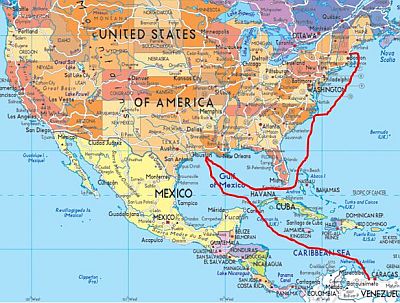Autopsy is the gold standard for determining cause of death
 Death at sea, particularly if jurisdictional issues are at play, can be difficult situations for all involved parties. This is greatly magnified if there is a suspicion of foul play.
Death at sea, particularly if jurisdictional issues are at play, can be difficult situations for all involved parties. This is greatly magnified if there is a suspicion of foul play.
A 23-year-old Filipino male crew member of a 144-meter oil/chemical transport ship boarded in Venezuela for an 8-month tour. After stops in Houston and Norfolk he reported to infirmary with right flank pain and blood in his urine. He was placed on sick leave and confined to quarters where he was found unresponsive the next day. The body was placed in a deep freezer and the ship diverted from international waters to Portsmouth, NH.
When authorities viewed the remains, the body was covered in bruises and the question of assault was raised. Every crew member was interviewed and no one disclosed any simmering grievances or overt fighting among the crew at any time since leaving Venezuela. The captain confirmed all on board were subject to random drug and alcohol testing. One crew member, identified as the decedent’s best friend, stated the decedent was bruising easily and had, recurrent nose-bleeds for the preceding three months. He was unwilling to seek assistance as he was his family’s sole source of income.
Given the circumstances surrounding the death and the still open question of foul play, an autopsy was conducted. The decedent was 5’6”, 145 lbs. There were innumerable contusions of varying age and size distributed over the trunk and extremities. Internally there were likewise innumerable petechiae and more confluent contusions on the surface of multiple organs and lining of the large bowel. The spleen was enlarged with prominence of its white blood cell component. Most notable was a large stroke, destroying a major portion of the white matter of the right side of the brain.
The underlying cause was an autoimmune condition in which an immune trigger initiates the production of antibodies directed against platelets, the tiny blood cells that initiate blood clotting. This information, only gleaned by autopsy, prevented the expenditure of professional time and resources launching an interstate and international homicide investigation. Had an individual been accused of assault or some degree of murder, autopsy findings would be entirely exculpatory, proving yet again, that legal proceedings in which cause and manner of death are unconfirmed by autopsy (such as cases of alleged drug-related deaths based on postmortem toxicology without autopsy) are fraught with reasonable doubt. Autopsy remains the gold standard in resolving disputed matters of cause of death.

